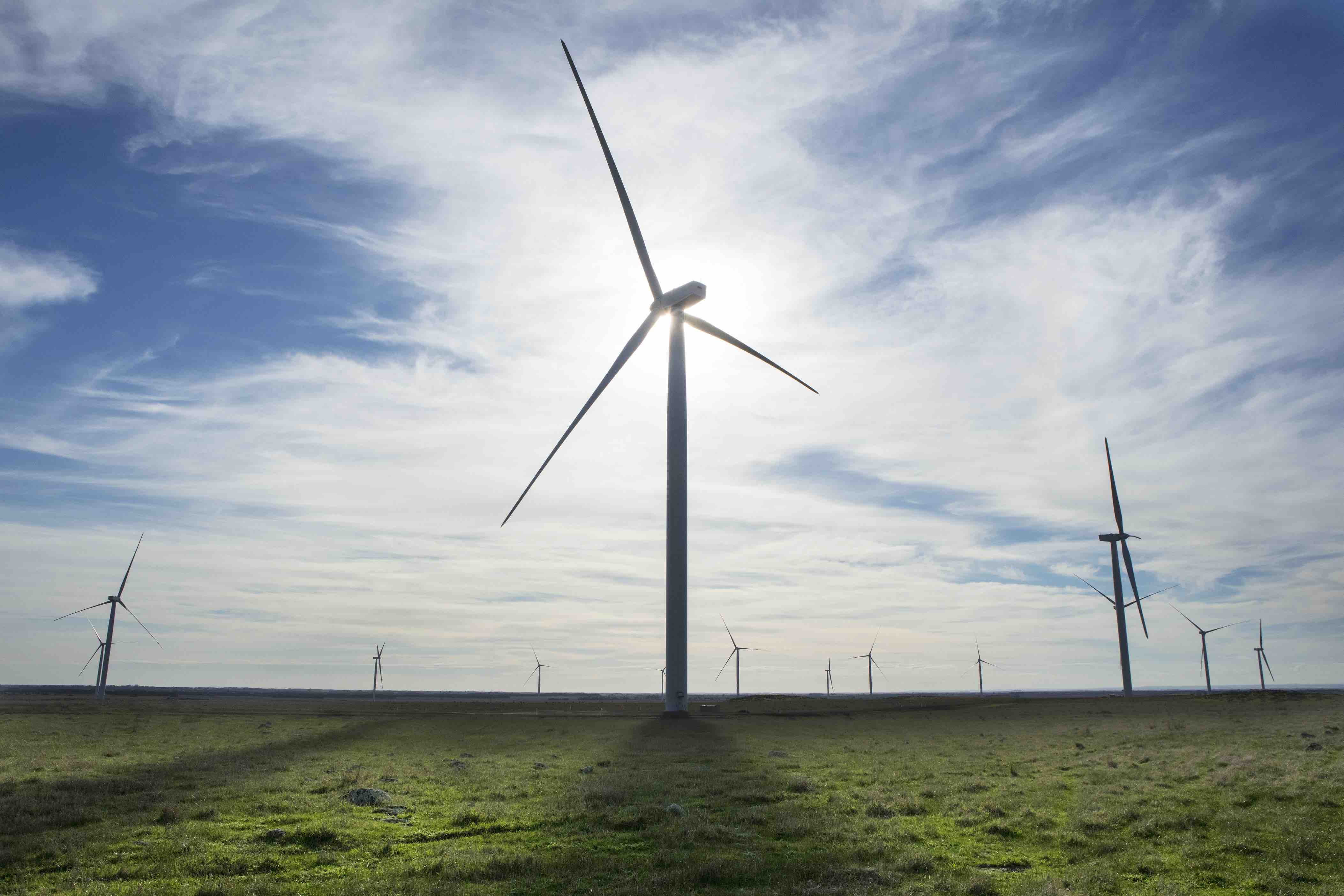Victoria’s Labor government is to sign contracts for six new wind and solar farms after an overwhelming response to its first, and Australia’s largest, renewable energy auction.
The response was so positive, and the value from the bids so great and the prices so low, that the government has reportedly elected to allocate 928MW of capacity – way more than the 650MW contemplated when the auction was first announced just over a year ago.
Details of the winning bids were released on Tuesday when premier Daniel Andrews and energy minister Lily D’Ambrosio visited the Ararat wind farm.
“This is great value – the bids were lower than what we thought they were going to be,” D’Ambrosio told Reneweconomy. “It just shows you that the market is really ripe for investment ….. when given the policy certainty.”
Not only does the auction result lock in lower power prices for the state, this auction and the recent rooftop solar support scheme also achieves as much in emissions reductions as the federal Coalition government planned to achieve over a whole decade with the defunct National Energy Guarantee. Now, the Morrison government has abandoned any attempts to achieve any emissions cuts.
The Victoria announcement came on the same day the state government also announced a $40 million scheme to subsidise the installation of battery storage in 10,000 homes, following its previous announcement of a $1.2 billion scheme to provide rebates and zero interest loans for 4kW of rooftop solar on 650,000 homes.
The winning projects from the large scale tender were:
- Berrybank wind farm, near Geelong (Union Fenosa) – 180MW
- Cawarp solar farm, near Mildura (Canadian Solar) 121.6MW
- Cohuna solar farm, near Echuca (Leeson Group/Enel Green Power) 34.2MW
- Dundonnell wind farm, near Warrnambool (Tilt Renewables) 336MW
- Mortlake South wind farm, near Mortlake (Acciona) 157.5MW
- Winton solar farm, near Shepparton. (FRV) 98.8MW
The auction is the latest initiative in the state government’s target of 25 per cent renewable energy by 2020 and 40 per cent by 2025 under its Victorian Renewable Energy Target (VRET) – a scheme that could be threatened if Labor lose power to the Coalition in the state election in November.
The over-allocation is not surprising, given that the auction received an overwhelming response from bidders, with more than 3,500MW of capacity on offer. Most of the winners appear to have avoided the area of central Victoria which the Australian Energy market Operator is warning faces curtailment because of network constraints.
The projects will not supply electricity to the government, but under an agreement known as a “contract for difference”, the Victoria government will guarantee the projects receive a minimum price.
This was set last November at $56/MWh for wind, $53/MWh for solar PV and $56/MWh for solar PV with tracking. If the actual wholesale price is higher than those numbers (and it has been nearly twice as high as that in Victoria for much of this year), then the wind farm owner returns the difference to the government.
If the wholesale price is lower, then the government makes up the difference to the renewable project owners to guarantee them a minimum ongoing income.
But this exposure is capped – and this is where the competition in the auction came from, as it is assumed that bids for a “base payment” came in at zero, at least for the wind farms, and possibly had “negative” prices.
It’s a remarkable outcome for the government. If wholesale prices do fall below $56/MWh, that’s a great result for consumers, and the costs to the government will be capped.
Those exact details, however, will not be released – unlike the details of the ACT auction. D’Ambrosio defended the secrecy: “We want to do more of these (auctions),” she told RenewEconomy. “We want to keep people hungry.”
The 336MW Dundonnell wind farm, which is the largest of the winning projects, was widely anticipated – not least by its owner and developer Tilt Renewables, which recently announced a proposal by its two biggest shareholders, Infratil and Mercury, to take the company private because it would be easier to raise capital.
That proposal, however, was rejected and the company will raise the funds on market, with a final investment decision expected by the end of the year. Acciona, meanwhile, said it would add battery storage to its proposed Mortlake South project.
The government says these projects will generate $1.1 billion of economic investment in regional Victoria and create more than 900 jobs, including 270 apprenticeships and traineeships. They will also drive a 16 per cent reduction in Victoria’s electricity sector greenhouse gas emissions by 2034/35.
“It’s simple – greater supply of renewable energy means lower power prices and more jobs for Victorian families,” Andrews said in a statement. “We’re making Victoria the capital of renewable energy and supporting the thousands of jobs it creates.”
The Clean Energy Council said the VRET is providing long-term certainty for investors that is resulting in the lowest cost renewable energy projects.
“Renewable energy such as solar and wind is now the lowest cost power generation that can be built today,” CEC chief executive Kane Thornton said in a statement.
“The Victorian reverse auction scheme is a well-designed policy that will ultimately save consumers money on their bills while providing much-needed certainty for the investors in the three wind farms and three large-scale solar plants announced today.
“Reducing power bills and emissions while securing the reliability of the power supply is achievable, and states like Victoria are showing it can be done with a mix of policies that are ambitious but achievable.”











